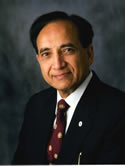Anterior skull base sarcomas: Report of characteristics and outcomes at a tertiary care cancer center Journal Article
| Authors: | Long, S.; Asimakopoulos, P.; McGill, M.; Cohen, M. A.; Patel, S. G.; Shah, J. P.; Ganly, I. |
| Article Title: | Anterior skull base sarcomas: Report of characteristics and outcomes at a tertiary care cancer center |
| Abstract: | Objective This study was aimed to describe our institutional experience on characteristics and treatment outcomes of sinonasal sarcomas invading the anterior skull base. Design Present study is a retrospective review. Setting The study was conducted at an academic cancer care center. Participants Thirty-one patients with skull base sarcomas treated with primary surgery from 1979 to 2015 were identified for this study from a preexisting database. Main Outcome Measures Survival and recurrence outcomes using the Kaplan-Meier method were the focus areas of the study. Results The median age was 44 years (range: 13-69 years). Twenty patients were male (64.5%). Twenty-nine patients underwent open craniofacial resection (93.5%) and two patients underwent endoscopic resection (6.5%). The majority of tumors were staged pT4 (77.4%). The most common pathologies were leiomyosarcoma (19.4%), osteosarcoma (16.1%), and chondrosarcoma (12.9%). Of those with known margin status, 10 patients had positive/close margins (32.2%) and 16 patients had negative margins (51.6%). Most tumors were high grade (74.2%). Twenty-three patients (74.2%) received adjuvant radiation and four patients (12.9%) received adjuvant chemotherapy. There were nine postoperative complications (29%) including one mortality and three cerebrospinal fluid leaks. There were 10 local, 2 regional, and 5 distant recurrences over a median follow-up of 74 months (range: 1-300 months). The 5-year disease-specific survival (DSS) was 69.8%. The 5-year locoregional recurrence-free probability (RFP) was 63.2% and the 10-year distant RFP was 71.7%. The 5-year DSS for high grade tumors was 64.2 and 85.7% for low grade tumors (p = 0.117). Conclusion This study contributes an updated analysis of anterior skull base sarcomas. Five-year DSS is approximately 70%. Analysis of survival outcomes based on grade, tumor size, and other factors is limited by small sample size and the rarity of these tumors. © 2022 Thieme Medical Publishers, Inc.. All rights reserved. |
| Keywords: | osteosarcoma; adolescent; adult; cancer survival; clinical article; controlled study; treatment outcome; aged; survival analysis; cancer surgery; survival rate; overall survival; histopathology; cancer recurrence; neck dissection; cancer patient; cancer staging; outcome assessment; follow up; antineoplastic agent; cancer grading; cohort analysis; data base; medical record review; retrospective study; survival time; cancer center; adjuvant chemotherapy; experience; surgical infection; surgical mortality; leiomyosarcoma; university hospital; adjuvant radiotherapy; chondrosarcoma; disease specific survival; craniofacial surgery; liquorrhea; orbit cellulitis; skull base tumor; skull surgery; surgical margin; epiphora; mortality rate; endoscopic sinus surgery; enophthalmos; local recurrence free survival; open surgery; cancer prognosis; human; male; female; article; tertiary care center; sinonasal sarcoma; distant recurrence free survival; head and neck sarcoma; paranasal sarcoma; sarcoma outcomes; skull base sarcoma |
| Journal Title: | Journal of Neurological Surgery. Part B: Skull Base |
| Volume: | 83 |
| Issue: | 3 |
| ISSN: | 2193-6331 |
| Publisher: | Thieme Publishing |
| Date Published: | 2022-06-01 |
| Start Page: | 265 |
| End Page: | 269 |
| Language: | English |
| DOI: | 10.1055/s-0040-1722667 |
| PROVIDER: | scopus |
| PMCID: | PMC9236737 |
| PUBMED: | 35769803 |
| DOI/URL: | |
| Notes: | Article -- Export Date: 1 August 2022 -- Source: Scopus |
Altmetric
Citation Impact
BMJ Impact Analytics
Related MSK Work









